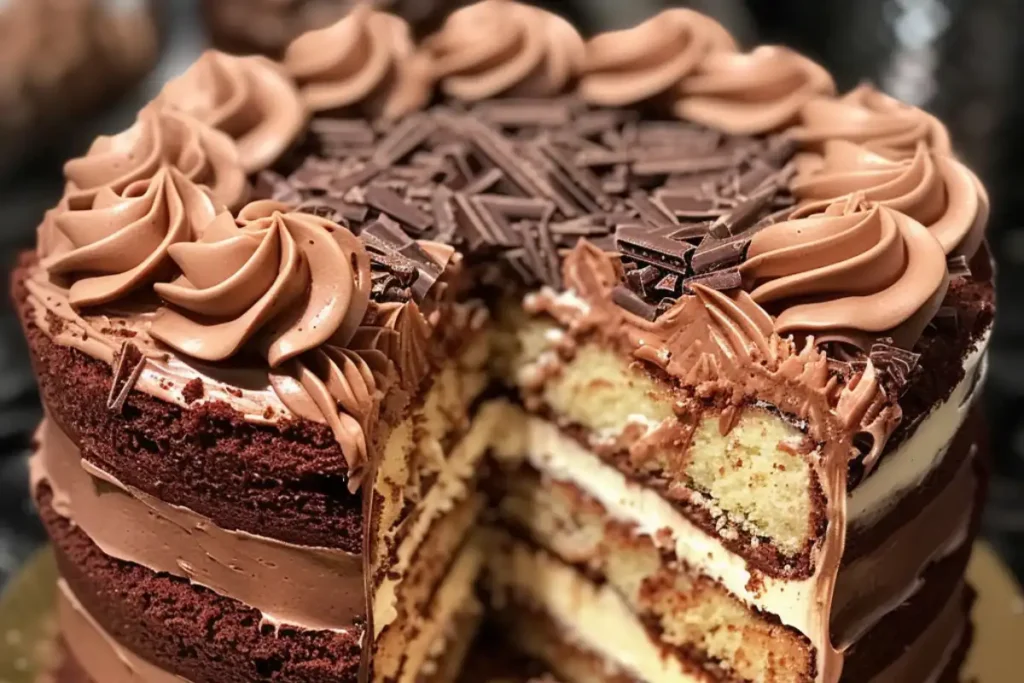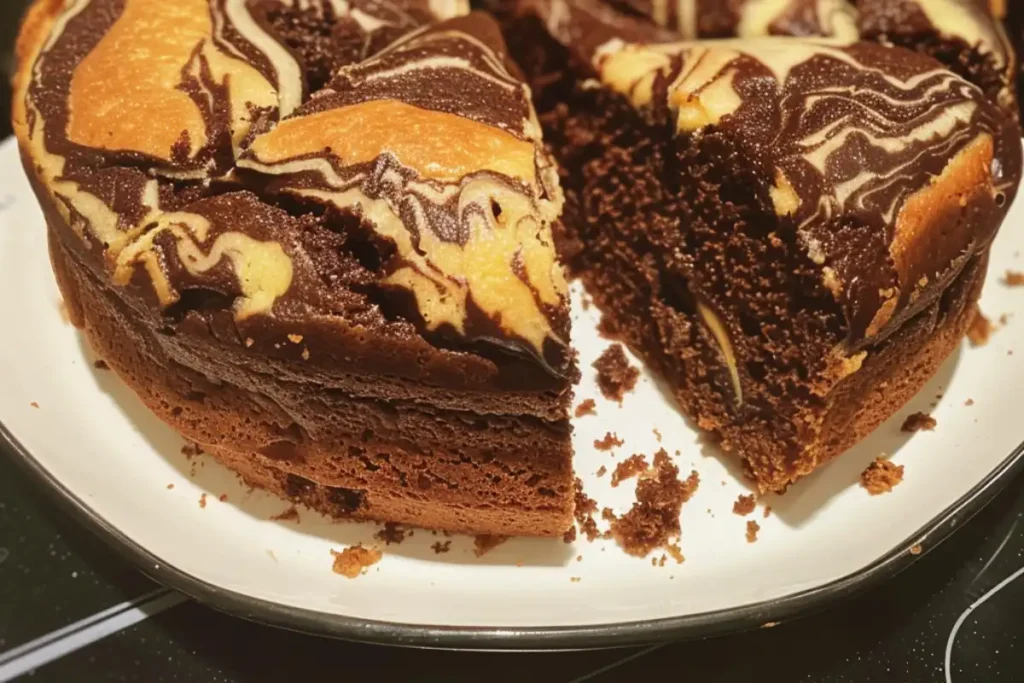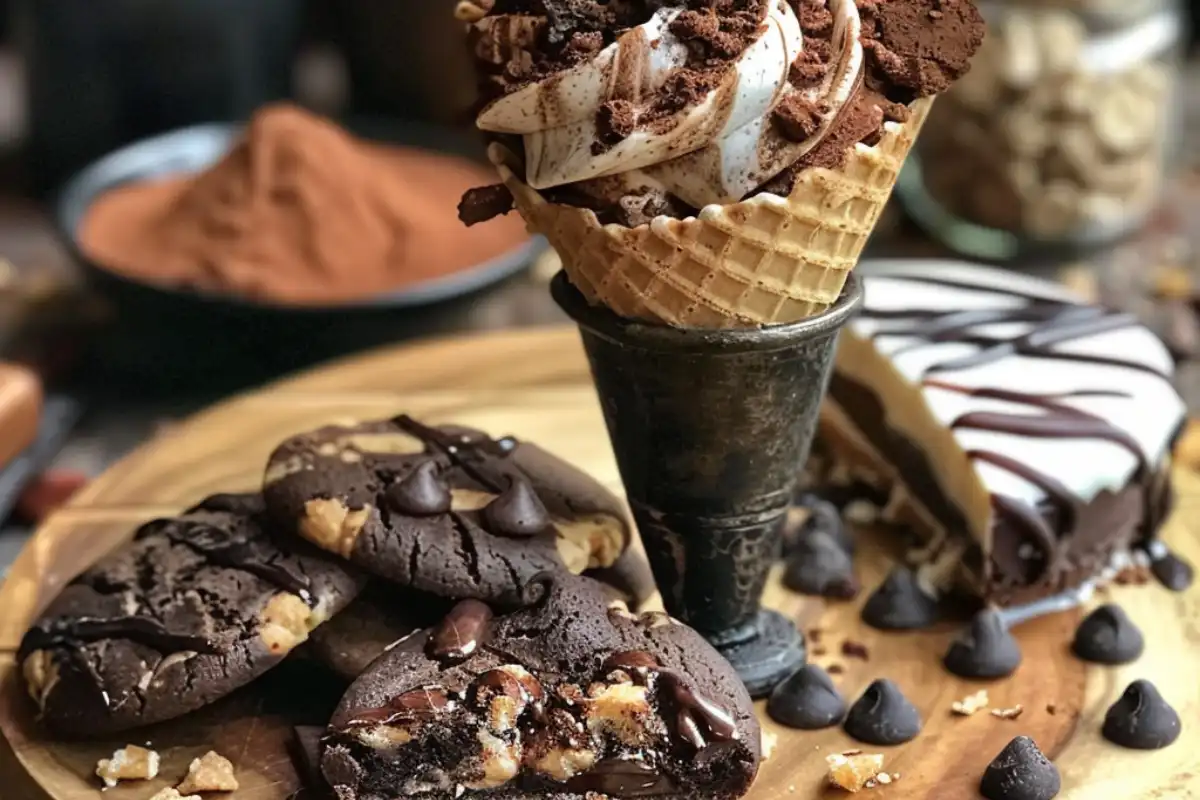When it comes to desserts, few combinations are as iconic and universally loved as vanilla and chocolate. These two flavors are often regarded as rivals, but in truth, they complement each other in ways that surprise the taste buds and delight the senses. Whether you’re indulging in a marble cake, savoring a swirl of chocolate-vanilla ice cream, or enjoying any other delicious treat, the pairing of vanilla and chocolate has become a classic staple in desserts worldwide.
But what exactly makes this combination so special? Is there a scientific reason that explains why vanilla and chocolate go so well together, or is it simply a matter of personal taste? In this article, we will take a deep dive into the history, science, and cultural impact of combining vanilla and chocolate. Along the way, we’ll also explore popular dishes, unique flavor pairings, and answer some common questions about this dynamic duo. By the end of this article, you’ll have a thorough understanding of why vanilla and chocolate belong together in the culinary world.
The History of Vanilla and Chocolate Pairing
To fully understand why vanilla and chocolate make such a beloved combination, we must first explore their rich and fascinating histories. The Totonac people, who lived in what is now modern-day Veracruz, first cultivated vanilla, which comes from the seed pods of the Vanilla planifolia orchid native to Mexico. They considered vanilla a sacred gift from their gods and used it in both culinary and medicinal practices. When the Spanish arrived in the Americas in the 16th century, they introduced vanilla to Europe. Europeans quickly fell in love with its sweet, floral aroma and began incorporating it into perfumes, medicines, and food.
Meanwhile, chocolate has deep roots in ancient Mesoamerican cultures. The Mayans and Aztecs cultivated cacao trees and used the beans to create a bitter beverage, reserved for royalty and religious ceremonies. Like vanilla, Europeans first encountered chocolate in the 16th century. However, the chocolate of that time differed greatly from the sweet treat we know today. Originally consumed as a bitter, spiced drink, it transformed into a beloved dessert ingredient after European settlers added sugar.
As vanilla and chocolate gained popularity in Europe, they naturally found their way into desserts. Bakers and confectioners frequently added vanilla to chocolate recipes to soften its bitterness and enhance its flavor. This pairing soon became a staple in confections, cakes, and candies, solidifying its place in culinary history. For a more detailed exploration of the history of vanilla and chocolate, their origins, and how these flavors became intertwined, the journey of these ingredients over centuries is fascinating.

Why Do Vanilla and Chocolate Complement Each Other?
While many view vanilla and chocolate as opposites—one light and sweet, the other dark and rich—they actually complement each other in ways that make them a perfect match. But what exactly causes these two flavors to work so well together?
The answer lies in their complementary flavor profiles. Vanilla offers sweet, floral, and slightly spicy notes, bringing warmth and creaminess to any dish. Its subtle, comforting flavor pairs well with a wide range of other ingredients. In contrast, chocolate, especially dark chocolate, has a more complex and bold flavor profile. Depending on its cocoa content, it can taste bitter, earthy, or slightly acidic.
Combining vanilla with chocolate balances out the bitterness and adds a layer of sweetness, creating a more rounded flavor. This harmony appeals to both sweet-toothed individuals and those who prefer more complex, bittersweet flavors. For this reason, many chocolate recipes call for vanilla, even if it’s not the star ingredient. Most commercial chocolate products contain a small amount of vanilla or vanillin (a synthetic version of vanilla) to enhance the overall flavor and make it more enjoyable.
In essence, vanilla acts as a smoothening agent for chocolate, softening its strong flavors and bringing out its richness. Without vanilla, chocolate can sometimes taste flat or one-dimensional. For a deeper understanding of how vanilla plays a crucial role in chocolate production, check out this article on vanilla’s role in chocolate-making.
Key Points:
- Vanilla enhances the sweetness and creaminess of chocolate.
- Chocolate brings depth and richness to vanilla.
- Together, they create a balanced, smooth flavor profile.
Popular Dishes That Combine Vanilla and Chocolate
The pairing of vanilla and chocolate isn’t just limited to ice cream or candy bars. This dynamic duo can be found in a wide variety of classic desserts that have stood the test of time. Below are some of the most popular dishes that highlight the perfect balance of vanilla and chocolate:
- Marble Cake: This visually stunning cake swirls vanilla and chocolate batters together to create a beautiful and delicious dessert. The lightness of vanilla contrasts with the richness of chocolate, offering the best of both worlds in every bite.
- Chocolate-Vanilla Swirl Ice Cream: A summertime favorite, chocolate-vanilla swirl ice cream blends both flavors into one creamy, refreshing treat. The alternating bites of vanilla and chocolate offer a delightful contrast that keeps your taste buds intrigued.
- Vanilla Ice Cream with Chocolate Syrup: One of the simplest yet most satisfying ways to enjoy vanilla and chocolate together is by drizzling rich chocolate syrup over a scoop of creamy vanilla ice cream.
- Churro Cheesecake: This fusion dessert combines the creamy texture of vanilla cheesecake with the crispy, cinnamon-spiced exterior of churros. You can read more about this delightful recipe on how to make churro cheesecake.
- Chocolate Chip Cookies: Many classic chocolate chip cookie recipes call for vanilla extract to enhance the flavor of the chocolate chips. The subtle sweetness of vanilla complements the rich, melty chocolate morsels.

These dishes showcase how well vanilla and chocolate work together in both flavor and texture. Whether you’re baking at home or enjoying a dessert at your favorite restaurant, the combination of vanilla and chocolate is always a winning choice.
Flavor Profiles: How Vanilla Enhances Chocolate
To fully appreciate why vanilla and chocolate make such a great pair, it’s important to understand their individual flavor profiles and how they interact when combined.
- Vanilla’s Flavor Profile: Vanilla is known for its sweet, floral, and slightly spicy aroma. It has a creamy, smooth texture that adds warmth and comfort to any dish. While subtle, vanilla has a complexity that makes it a versatile ingredient in both sweet and savory recipes.
- Chocolate’s Flavor Profile: Chocolate, especially dark chocolate, is rich and complex. Depending on its cocoa content, it can have bitter, earthy, and acidic notes. Dark chocolate in particular can be quite intense, which is why it’s often paired with sweeter ingredients to balance its bold flavors.
When these two flavors are combined, they create a symphony of tastes that is both balanced and layered. Vanilla adds a touch of sweetness and creaminess to chocolate, softening its bitterness and making it more palatable. This is why vanilla is often added to chocolate recipes, even if it’s not the main flavor. It enhances the overall taste, creating a more well-rounded dessert.
Key Points:
- Vanilla is sweet, floral, and slightly spicy, adding warmth and complexity to desserts.
- Chocolate can be bitter and bold, depending on its cocoa content.
- Vanilla softens chocolate’s bitterness and enhances its creaminess.
The Role of Vanilla in Chocolate Production
When you bite into a bar of chocolate, you might not realize that vanilla is often a key ingredient in its production. Many commercial chocolate products, especially those from well-known brands, contain small amounts of vanilla or vanillin (a synthetic version of vanilla). But why is vanilla used in chocolate-making, and what does it do to the flavor?
Vanilla plays an important role in balancing and enhancing the flavor of chocolate. In particular, it helps to smooth out the bitterness of dark chocolate and adds a layer of sweetness that rounds out the overall taste. Even in milk and white chocolate, where the cocoa content is lower, vanilla is used to enhance the creaminess and richness of the final product.
Without vanilla, chocolate can taste flat or overly bitter. This is why vanilla is often used as a supporting flavor in chocolate recipes, even when it’s not the star ingredient. For more insights into how vanilla is used in chocolate production, check out this informative article on vanilla’s role in chocolate-making.
Related Reading:
If you’re interested in other desserts that use vanilla and chocolate, consider checking out how to thicken Cool Whip to frost a cake. This simple technique can help you create desserts with the perfect texture and flavor balance.
Common Misconceptions: Are Vanilla and Chocolate Opposites?
There is a common misconception that vanilla and chocolate are opposites. This belief likely stems from the fact that they are often offered as separate flavor choices in ice cream shops, coffeehouses, and dessert menus. However, while they may appear to be opposites on the surface—vanilla is light and sweet, while chocolate is dark and rich—they are actually complementary flavors that enhance each other.
The truth is that vanilla and chocolate work together to create a balanced and harmonious flavor profile. Vanilla’s sweetness and lightness help to balance the bold, sometimes bitter notes of chocolate, making the combination more palatable and enjoyable. Instead of clashing, these two flavors come together to create a more complex and satisfying dessert experience.
In fact, many of the most popular chocolate desserts include vanilla as a supporting ingredient. Whether it’s a batch of chocolate chip cookies or a decadent layer cake, the addition of vanilla enhances the flavor and texture of the final product.
Unique Flavor Pairings with Vanilla and Chocolate
While vanilla and chocolate are a classic combination on their own, they also pair well with a variety of other flavors. If you’re looking to get creative in the kitchen, here are some unique flavor pairings that complement both vanilla and chocolate:
- Fruits: Citrus fruits like oranges, lemons, and raspberries bring brightness and acidity to vanilla and chocolate desserts. The tartness of the fruit contrasts beautifully with the sweetness of vanilla and the richness of chocolate.
- Nuts: Almonds, hazelnuts, and pecans add a crunchy texture and nutty flavor to desserts featuring vanilla and chocolate. The buttery richness of the nuts enhances the creaminess of vanilla and the boldness of chocolate.
- Spices: Cinnamon, nutmeg, and cardamom bring warmth and depth to vanilla and chocolate dishes. These spices add complexity to the flavor profile, making each bite more interesting and flavorful.
For more inspiration on how to create unique desserts using vanilla and chocolate, check out this recipe for churro filling, which pairs beautifully with both flavors.
FAQs Section
Why does vanilla make chocolate taste better?
- Vanilla enhances chocolate by adding sweetness and creaminess, which helps to balance out the bitterness and acidity of dark chocolate. The combination creates a more well-rounded and enjoyable flavor.
What other flavors go well with vanilla and chocolate?
- In addition to each other, vanilla and chocolate pair well with a variety of other flavors, including fruits like citrus, nuts like almonds and pecans, and spices like cinnamon and nutmeg.
Can you mix chocolate and vanilla together?
- Absolutely! Mixing vanilla and chocolate creates a balanced flavor profile that is both sweet and rich. This combination is used in a wide range of desserts, from ice cream to cakes and cookies.
Is vanilla healthier than chocolate?
- While vanilla doesn’t offer the same nutritional benefits as chocolate, it does have calming and stress-relieving properties. Chocolate, particularly dark chocolate, is rich in antioxidants and minerals that support heart health and brain function.
Conclusion
In conclusion, vanilla and chocolate go beyond being classic flavors—they form a perfect match in the world of desserts. The combination of vanilla’s sweetness and chocolate’s richness creates a balanced and harmonious flavor profile that people have cherished for centuries. Whether you’re savoring a simple scoop of chocolate-vanilla swirl ice cream or baking a batch of chocolate chip cookies with a touch of vanilla, this pairing will never go out of style.
By exploring the history, flavor profiles, and health benefits of vanilla and chocolate, you can fully appreciate why these two flavors complement each other so well. So, the next time you’re choosing between vanilla and chocolate, why not enjoy both?
For more ideas on how to combine these flavors in your desserts, try out these Cool Whip cake mix cookies or indulge in a delicious baked cheesecake. You won’t be disappointed!

